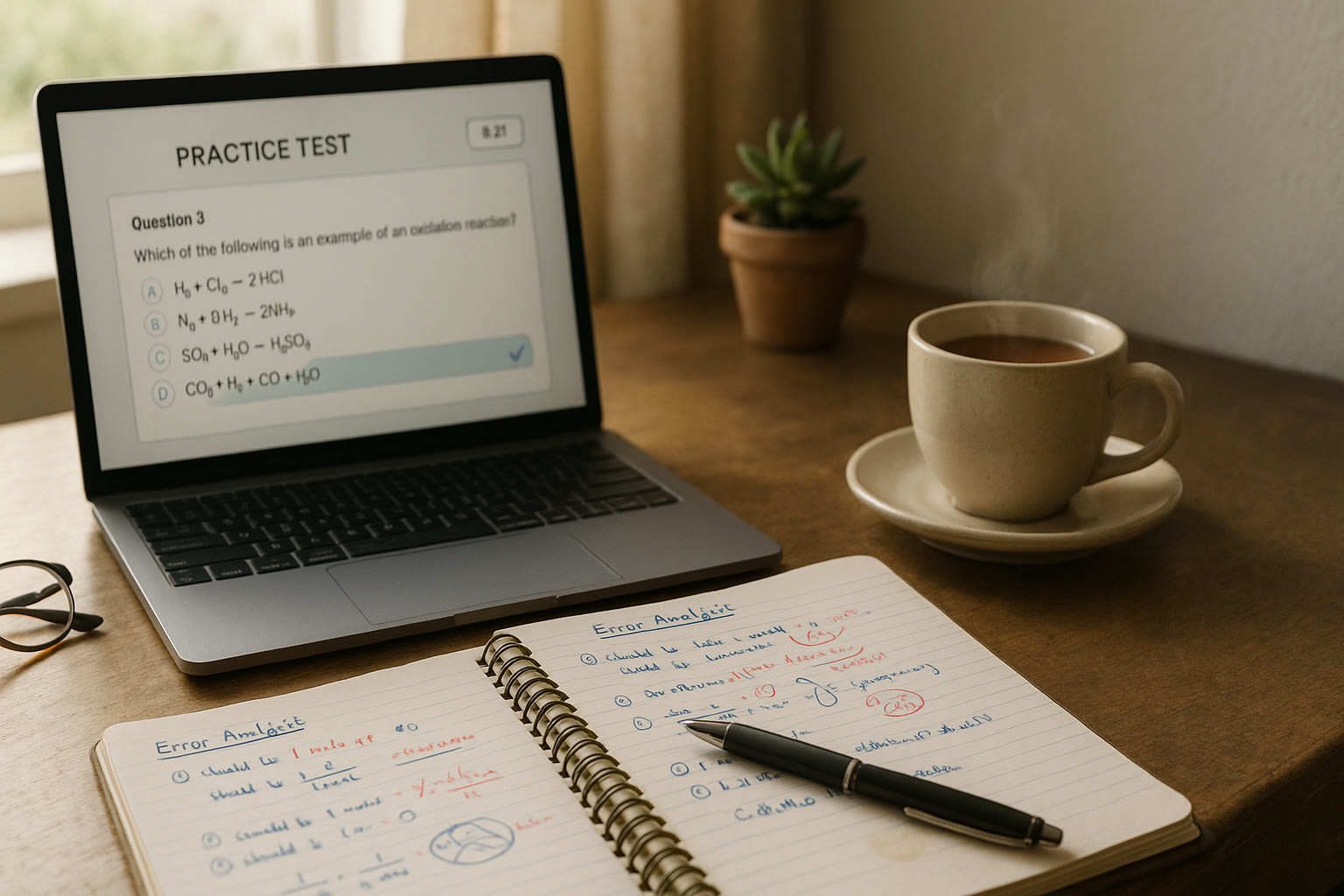Why the Idea of a “Perfect” SAT Score Feels So Big
When your teenager whispers, or sometimes shouts, that they want a perfect SAT score, it’s easy to feel two things at once: proud and alarmed. Proud because aiming high is a wonderful trait. Alarmed because “perfect” feels absolute — and absolutes can be heavy. For many parents, the perfect score symbolizes certainty: the one number that will unlock elite colleges, scholarships, and a smooth path forward. But the truth is more nuanced.

What “perfect” means in the digital SAT era
The digital SAT still reports scores on the familiar 400–1600 scale. A 1600 is technically the top of that range — a rare and impressive achievement. But because the exam moved to a shorter, adaptive, and more targeted digital format, the way students reach top scores looks and feels a little different than in the older paper-and-pencil era. Questions are shorter, there’s often more time per question on average, and the test adapts between modules to match a student’s performance. In short: the measurement is still rigorous, but the route to that top number has changed.
Before You Chase the 1600: Ask Better Questions
Instead of asking, “Should my child get a perfect score?” start with sharper questions that get at priorities and trade-offs. These are the ones that will guide a healthier, more strategic plan.
- Why is a perfect score important to us — for admissions, scholarships, or personal pride?
- What are our child’s college targets, and what SAT ranges do those schools typically accept?
- How does chasing a perfect score affect other parts of the application — grades, extracurriculars, mental health?
- What timeline do we have for preparation, and is it sustainable alongside school obligations?
An example that helps
Imagine two students: Sara wants to study biomedical engineering at a top-50 school; her current scores are in the 1450s and she has strong coursework and research experiences. Marcus wants to study film at a selective arts program; his strengths are portfolio and interviews, with SAT in the 1200s. For Sara, a targeted push from 1450 to 1520–1550 might be more impactful than an all-consuming scramble for 1600. For Marcus, the added stress of chasing perfection might yield much less marginal benefit.
How Admissions Offices Really Use SAT Scores
Colleges use SAT scores in many ways: as one data point among many, for scholarship cutoffs, for placement decisions, and sometimes to clear application review thresholds. Importantly, a difference between a near-perfect score and a perfect score often won’t change admission decisions at many schools. Admissions teams are looking at the whole person — transcript rigor, essays, recommendation letters, activities, and demonstrated interest.
Putting numbers into perspective
Here’s a simplified table showing how incremental SAT improvements typically map to admissions impact for many schools (this is a general framework — specific colleges vary):
| Score Range | Admissions Impact (Typical) | Common Use |
|---|---|---|
| 1200–1300 | Modest positive effect | State universities, many merit scholarships |
| 1300–1450 | Stronger competitiveness | Selective public and some private colleges |
| 1450–1550 | Highly competitive | Top-50 and some highly selective programs |
| 1550–1600 | Elite score; often redundant with other elite indicators | Top-20 schools, scholarship differentiation in some cases |
Notice how the curve flattens near the top. The difference between 1550 and 1600 is smaller in terms of admissions leverage than the difference between 1250 and 1450 for many institutions.
Balancing Priorities: Growth, Well-being, and Strategy
Pushing for improvement is great — but it should be balanced with academic health and mental well-being. Obsessive practice can erode motivation and burn out students before application season even begins.
Practical ways parents can support balance
- Set realistic, measurable mini-goals (e.g., improve section score by 40 points in 8 weeks) rather than a vague “1600 or bust.”
- Encourage consistent habits: short, daily practice beats occasional marathon sessions.
- Keep the application in view: remind students that essays, grades, activities, and teacher recommendations matter just as much.
- Watch for stress signals — sleep loss, irritability, declining classwork — and re-evaluate the plan if those appear.
How to Build an Effective, Realistic SAT Plan
A smart plan is tailored to the student’s starting point, strengths, weaknesses, and timeline. One-size-fits-all programs rarely deliver optimal results.
Steps to assemble the plan
- Baseline: Start with an official, full-length digital practice test under timed conditions.
- Analyze: Identify the content areas that need the most work (algebra versus data analysis, command of evidence, grammar conventions, time management, etc.).
- Target: Set a few clear targets — a total score, section goals, and skills to master.
- Practice: Use a mix of official digital practice (Bluebook-style), adaptive drills, and targeted content lessons.
- Review: Spend more time reviewing errors than doing new problems; understanding why an answer is wrong is where learning sticks.
- Mock Tests: Schedule regular full-length digital practice tests to track progress and reduce test-day anxiety.
Personalized tutoring is often the most time-efficient way to accelerate learning. Sparkl’s personalized tutoring, for example, offers one-on-one guidance, tailored study plans, and expert tutors who can identify the smallest, most impactful changes a student needs. When used alongside regular practice, this kind of targeted support helps students improve efficiently without breaking their routines.
Study cadence example (12-week plan)
- Weeks 1–2: Baseline test + error analysis; 3 short practice sessions per week (30–45 minutes).
- Weeks 3–6: Focused content blocks (math fundamentals, evidence-based reading strategies); one full practice test every 2 weeks.
- Weeks 7–9: Timed sections and adaptive practice; targeted review of weak areas; practice tests every 10 days.
- Weeks 10–12: Test-day routines, pacing, and confidence work; full practice tests weekly; light review days before the real test.
When a Perfect Score Makes Sense
There are situations where aiming for 1600 is a sensible goal — but they’re narrower than you might assume.
- Specific scholarship cutoffs that require a near-perfect score.
- Certain merit-based recognitions where top percentiles are used as a selection metric.
- Students who genuinely enjoy the pursuit and can practice without sacrificing other priorities.
- Those who already sit very close to the top range and can reasonably expect marginal gains with focused work.
Even in these cases, parents should weigh opportunity cost. Is the time spent chasing the last 20 points taking away from a compelling portfolio piece, subject mastery, or internship that could boost applications even more?
How to Talk to Your Teen About Scores — Without Pressure
Communication matters. The way you frame goals can either motivate or demoralize. Here are language choices that help.
Helpful phrases
- “What score would make you feel proud of your effort?”
- “Let’s decide together how much time this is worth so it doesn’t crowd out your other goals.”
- “Tell me when you need a break — we can adjust the plan.”
Phrases to avoid
- “You must get a 1600 to get into X.”
- “Everyone else is getting perfect scores.”
- “If you don’t get perfect, it’s wasted effort.”
Remember: students are more likely to persist when they own the plan. Invite them to co-design the schedule and pick practice times that fit their natural rhythm.

Real-World Context: How Employers and Colleges View Scores
Colleges use SAT scores primarily for admissions and scholarships; after matriculation, employers rarely ask for SAT scores. By the time students look for internships or jobs, portfolios, internships, GPA, recommendations, and demonstrated skills usually matter more. This perspective helps parents place SATs in a longer-term context: it’s important, but not the only currency.
Case study
Consider a student admitted to a competitive engineering program with a 1560 and strong research experience versus another admitted with a 1600 but less hands-on experience. Over four years, the first student’s practical projects and internships might create stronger post-graduation opportunities. Admissions offices look at whole-person fit; what you do after you’re admitted shapes outcomes equally — sometimes more.
What to Watch For: Unhealthy Patterns
Parents should be alert to signs that preparation has become harmful rather than helpful:
- Obsessive counting of practice-test scores day-to-day.
- Significant decline in school performance or loss of interest in activities once enjoyed.
- Exhaustion, insomnia, or anxiety tied directly to prep sessions.
- Avoidance of social or family time in the name of “studying.”
If you see these, pause the regimen. Consider shifting to a tutor who emphasizes sustainable routines, or reduce intensity and rebuild confidence with short, positive practice sessions. Sparkl’s tutors, for instance, often combine skill-building with mindset coaching, helping students manage stress while solidifying gaps in knowledge.
Practical Tools and Resources (What Works Best)
Use high-quality, official practice materials whenever possible. The digital format matters: practice should mimic the test-taking environment to build comfort with the platform, navigation, and pacing.
- Full-length digital practice tests under timed conditions.
- Focused, official question banks for error analysis.
- Targeted mini-lessons on recurring weaknesses (e.g., quadratic functions or evidence questions in reading).
- One-on-one tutoring sessions to set priorities and remove misconceptions efficiently.
How parents can help without doing the work for them
- Create a consistent, distraction-free study space.
- Celebrate small wins — a higher section score, a topic mastered, or consistent study habits.
- Provide healthy supports: snacks, breaks, and occasional check-ins rather than micromanaging every practice session.
- Arrange for expert help when needed; professional tutors translate wasted effort into targeted gains.
Money Matters: Cost, Scholarships, and Return on Investment
Parents often ask whether the cost of private tutoring or test prep “pays off.” The answer depends on context. If targeted tutoring increases a student’s score enough to qualify for significant merit aid or a scholarship, the ROI can be substantial. For many families, a blended approach — some independent practice, one-on-one tutoring for weak spots, and a few timed mocks — offers a sensible balance.
A small planning table
| Investment | Typical Benefit | When It Makes Sense |
|---|---|---|
| Self-study (books, free digital practice) | Low cost, moderate gains | Student is disciplined and needs minor improvements |
| Targeted 1:1 tutoring | High efficiency, focused gains | Specific weaknesses or time-limited prep window |
| Full-service test prep courses | Structured path, group accountability | Students who benefit from schedules and peer motivation |
Choosing Sparkl’s personalized tutoring can make sense when efficiency and customization matter. One-on-one tutors tailor plans to a student’s exact profile, which is often the fastest route from a high-but-not-perfect score to an application-ready top score without sacrificing other commitments.
Final Thoughts: What Really Defines Success
Perfect SAT scores are impressive and sometimes useful, but they are not the sole gatekeeper of opportunity. What ultimately matters is a student’s prepared, resilient, and authentic application. Parents who focus on sustainable improvement, emotional balance, and strategic use of resources give their children not just a shot at a high SAT score but the skills to thrive in college and beyond.
A five-point checklist for parents
- Define the real purpose of SAT prep (admission, scholarship, personal growth).
- Use official, digital-style practice tools to mirror the test environment.
- Target weaknesses with short, concrete goals and track progress.
- Watch for burnout and prioritize mental health and schoolwork.
- If hiring help, choose personalized tutors who align with your child’s learning style — and consider options like Sparkl that emphasize tailored plans and expert guidance.
In the end, a “perfect” SAT score is a lovely possibility, but it should be part of a broader strategy that builds confidence, skills, and a balanced life. Help your child fall in love with learning more than a number; the rest will follow.
Encouragement for the Journey
Be the calm in your student’s test-prep storm. Celebrate effort, normalize setbacks, and keep the bigger picture in view. Whether your child reaches 1600 or grows into a stronger, more confident applicant with a score that reflects steady improvement, your support will be the most meaningful factor in their success.
And if you ever want help crafting a study plan that fits your teen’s personality and schedule, consider reaching out for personalized tutoring that combines subject-matter expertise with practical study strategies and data-driven insights. The right guidance can turn frustration into progress — and make the journey far less lonely.



















No Comments
Leave a comment Cancel